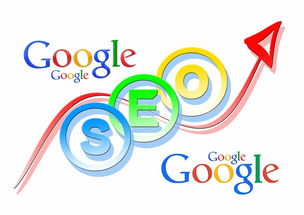In the ever-evolving landscape of web development, optimizing a website for performance, search engines, and User experience is paramount. While there are numerous elements to consider in this process, ensuring that your website includes certain key HTML tags is fundamental. These tags not only provide structure and meaning to your content but also help search engines understand and index your pages effectively. Let's delve into the essential HTML tags that cannot be omitted in website optimization.
1、Doctype Declaration: The doctype declaration informs the browser about the version of HTML being used. It's crucial as it helps the browser render the page correctly. For example, if you're using HTML5, the declaration would be <!DOCTYPE html>.
2、HTML Tag: The HTML tag is the root element of an HTML document. It's where the browser starts reading the code. Every other tag opens within this tag and closes outside it. The syntax is <html></html>.
3、Head Tag: The head tag contains meta-information about the document that isn't displayed on the page itself. It's where you place things like the title for the document, character encoding, metadata, CSS stylesheet links, and scripts. The syntax is <head></head>.
4、Title Tag: The title tag defines the title of the document, which is displayed in the browser's title bar or tab. It's also used by search engines in the results page. A good title tag should be descriptive and include relevant keywords. The syntax is <title></title>.
5、Body Tag: The body tag encloses all the content that is visible to web users when they visit your site. This includes text, images, links, tables, lists, etc. The syntax is <body></body>.
6、Meta Tags: Meta tags provide metadata about the HTML document, including information about keywords, description, author, and more. They are placed within the head tag and help improve search engine optimization (SEO). Examples include <meta charset="UTF-8"> for character encoding and <meta name="description" content="..."> for a description.
7、Link Tags: Link tags are used to link CSS stylesheets to an HTML document. They are placed within the head tag and have a rel attribute set to "stylesheet", followed by the href attribute pointing to the CSS file location. The syntax is <link rel="stylesheet" href="styles.css">.

8、Script Tags: Script tags are used to include JavaScript within an HTML document. They can be placed either in the head section or at the end of the body section. The syntax is <script src="script.js"></script>.
9、Heading Tags (H1-H6): Heading tags provide structure and hierarchy to the content on your web page. H1 is generally used for the main title, with H2 for subheadings, and so on. These tags help screen readers interpret your page structure and can improve SEO when used appropriately.
10、Paragraph Tags: The paragraph tag <p></p> is used to wrap text into paragraphs, providing structure and readability to the content.
11、Alt Attribute for Images: The alt attribute provides alternative text for an image if it cannot be displayed. It's important for accessibility and SEO. The syntax is <img src="image.jpg" alt="Description of image">.
12、Anchor Tags: Anchor tags <a href="..."></a> are used to create hyperlinks, which allow users to navigate between different pages or sections within a page. They are crucial for user navigation and are often crawled by search engines to understand the link structure of your site.
13、Div and Span Tags: These tags are used for styling purposes, as they have no inherent formatting themselves but can be styled with CSS. Div tags are block-level elements, while span tags are inline elements. They help in creating layout structures and applying styles to specific sections of the content.
14、Strong and Emphasis Tags: Strong <strong></strong> and emphasis <em></em> tags are used to indicate importance and stress emphasis on text respectively. They help in conveying tone and importance within the content.
15、List Tags: Ordered <ol> and unordered <ul> list tags provide structure to lists of information. They are useful for both user readability and search engines to understand the content structure.
16、Table Tags: Table tags <table></table>, along with related tags like <tr>, <td>, and <th>, are used to display tabular data. They provide structured information that can be parsed by search engines.
17、Form Tags: Form tags <form></form> are used to create forms for user input. They are essential for interactivity and data collection on websites.
18、Input Tags: Input tags <input type="..."> are used within forms to create fields for user input, such as text fields, checkboxes, radio buttons, and submit buttons.
19、Base Tag: The base tag <base href="..."> specifies the default URL for all relative links on a page. It's useful for SEO and ensuring correct linking within the site.
20、Canonical Tag: The canonical tag <link rel="canonical" href="..."> helps prevent duplicate content issues by indicating the preferred version of a page with similar or identical content.
21、Schema Markup: While not strictly an HTML tag, schema markup (using microdata or RDFa) provides additional context to your content by adding semantic vocabulary. It helps search engines better understand the information on your page, leading to richer search results and increased visibility.
In conclusion, while there are many HTML tags available, the ones listed above are essential for website optimization. They provide the necessary structure, semantics, and accessibility to your website, ensuring that it performs well both for users and search engines. Remember, a well-structured and properly marked-up website is the foundation for successful SEO and user experience.
评论列表 (0条)